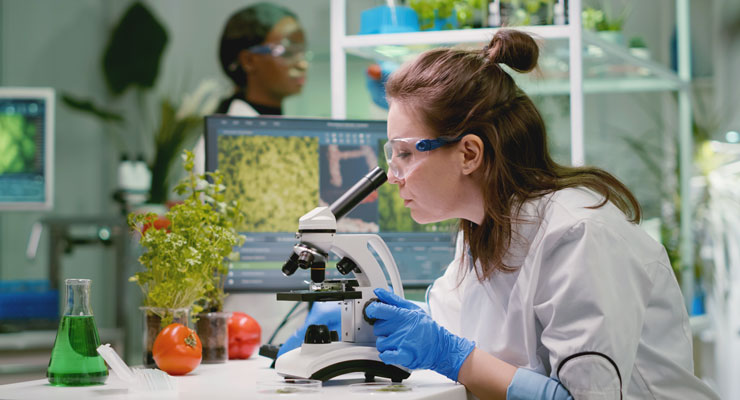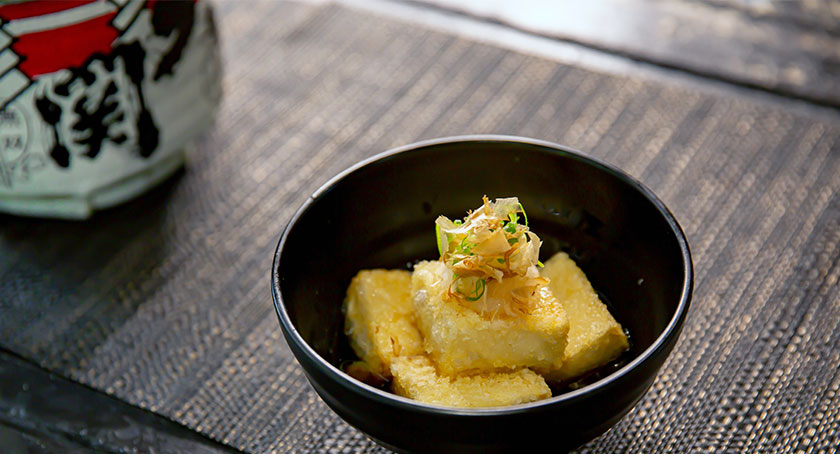Features
Defending the Roots of the Herbal Products Market
As demand accelerates for natural health solutions, industry stakeholders are prioritizing quality, consistency, and best practices for the long-term.

By: Sean Moloughney

Sales of herb/botanical dietary supplements in the U.S. reached $11.4 billion in 2020, up 17% over 2019, according to Nutrition Business Journal’s 2021 Supplement Business Report. The COVID-19 pandemic has clearly accelerated consumer demand for products targeting immune health, stress/sleep, and related health concerns.
In terms of the top herbs/botanicals by 2020 sales, according to NBJ, hemp CBD represents the largest category at $549 million, though sales dipped 5.9%. This is followed by Ayurvedic herbs ($336 million, +27.9%), turmeric ($336 million, -2.4%), elderberry ($325 million, +112.8%), rosehips ($236 million, +690.2%), cranberry ($197 million, +6.3%), fruit & vegetable supplements ($194 million, +18.4%), Echinacea ($183 million, +25.1%), psyllium ($179 million, +6.0%), and maca ($158 million, +4.3%).
Brands have a range of opportunities in a market that has continued to grow each year since 2004 and continues to break records with increased consumer focus on natural, preventive health solutions. Ultimately, delivering safe, unadulterated, efficacious products while managing short- and long-term supply chain challenges can help advance the marketplace further in the mainstream.
Market Motivators
Like most facets of society and business, COVID-19 has had an enormous impact on the herbal products industry, noted Leslie Gallo, president, Artemis International, Inc. “As the virus raged around the world for well over a year, it created a dynamic shift in our business because consumers became hyperaware of the importance of maintaining a healthy immune system. While we’re all quite weary of COVID at this point, its ripple effect on consumers cannot be overstated. Physical health—and for that matter, mental health, too—have never been more top of mind, and are likely to remain there indefinitely. “
The pandemic has compelled consumers to improve their overall health as well as immune function, according to Shaheen Majeed, president worldwide, Sabinsa, leading many people to natural, traditional medicine. “Beginning in March 2020, demand for immune support skyrocketed, and products supported with clinical studies were particularly popular,” he said. “Because awareness has grown that immunity can be improved by maintaining a healthy gut microbiome with probiotics and prebiotics, we saw heightened demand for LactoSpore and other offerings in that category. Natural products with the ability to activate macrophage immune cells and NK-cells, and in turn, the T-cells, and B-cells for holistic immunomodulatory activity also did well.”
While COVID has clearly put a spotlight on immune health, this market had always been a key component of a healthy supplement regimen, according to Francis Foley, president, Xsto Solutions, LLC. “We are finally recognizing that sporting activities and exercise is stressing our immune systems,” he said. “Whether we are running a 10k over the weekend or involved in more intense activities, we are stressing our bodies and we often pay the price a week or so later with cold-like symptoms. We can eliminate or reduce that occurrence by supporting the immune system with what it needs to fight off illness.”
The pandemic and the categories it impacted most, such as immunity, sleep, stress, etc. are still high on everyone’s priority list, said Wilson Lau, vice president, Nuherbs. “While in some parts of the world the crisis phase of the pandemic is waning, the all-over-impact on business operations is still at a peak because of staffing and transportation challenges.”
Following a long and unpredictable 16 months, consumers are trying to take control of their health in general, said Ramon Luna, marketing coordinator, Ecuadorian Rainforest, and are hopeful that supplement brands can offer solutions. “Not only is ease of use going to be vital for any brand to be successful in the coming years, but also efficacy and proven benefits. All this together will help foster not only brand loyalty but the belief that herbal products can actually help.”
Appealing to Consumers
Trust is an important component of consumer buy-in for the herbal products market, said Brian Zapp, managing director, Applied Food Sciences, Inc. (AFS). According to Mintel data on clean label energy drinks, only 38% of U.S. consumers say they trust what manufacturers say on labels. “Fortunately, you can build trust through transparency,” said Zapp. “By substituting artificial and unrecognizable ingredients with known botanical sources, brands can quickly show the consumer something familiar. A great example of this is caffeine and energy products. The concern or lack of trust is amplified when it comes to caffeine. A recent survey suggested that a quarter of all energy drink consumers drink fewer energy drinks because they don’t trust the artificial ingredients. On the other hand, we all know what it’s like to drink coffee or tea. They’re the most widely consumed beverages on the planet. Therefore, by subbing artificial ingredients with natural or organic caffeine from coffee and tea, we are much more inclined to trust those ingredients on a label.”
According to Foley, consumers want efficacious and clean label herbal products. “Value pricing” is important, he noted, but people realize “you get what you pay for.”
Steve Fink, vice president, marketing, PLT Health Solutions, noted that younger consumers are proactively addressing their health issues. “When you look at supplement sales data for the last year, Gen-Xers and Millennials are the fastest growing segment of supplement use. They, more than any other demographic, are embracing what we’ve come to call the ‘self-care ethos.’”
Tracking market interest across a range of health and wellness platforms, Fink said PLT is noticing the greatest level of interest in the cognitive health categories, followed by active/sports nutrition and weight management. “We are seeing real changes in what consumers are looking for in their health and wellness products as we emerge from the last 15 months. Self-care represented by improved mood and lower stress is growing dramatically, particularly among Millennial consumers. We are also entering what may be one of the biggest weight loss seasons ever, as people look to lose the ‘quarantine 15’ (or more).”
Ultimately, consumers today want “highly efficacious ingredient solutions backed by solid clinical science that will address specific health and performance issues,” Fink added.
Consumers care about the safety and efficacy of dietary supplements, said Majeed. “Brands that use ingredients backed by research, in the amounts shown to provide the desired benefits, are more likely to have repeat purchases.”

Innovation Trends
Alongside immune health, cognitive health, mood, sleep and stress have all been driving product development of late, according to Stephen Lukawski, CEO of Research Science Specialty Ingredients (RSSI) and partner of Fruit d’Or Nutraceuticals. “The video gamer market also seems to be growing in popularity, so there’s been a lot of product development in nootropics.” Meanwhile, the gummy industry seems to be a strong market driver “as people are becoming pill fatigued and looking for different delivery systems,” he noted.
Elderberry continues to lead the way for immune health, noted Devon Bennett, president of Innovative Natural Solutions (INS). “There’s been so much product development surrounding cough and cold, respiratory, and strengthening the immune system.” With so much demand for elderberry, “the challenge has been supply-chain concerns and dealing with adulteration issues. INS Farms has been one of the few companies that have been able to guarantee a supply all year around due to strong partnerships with growers and manufacturers in Europe.”
People want to feel confident in ingredients that deliver effective and sustained benefits, and they want them in easy-to-consume products, added Gallo. “Key ingredients including vitamin C, zinc, elderberry, Echinacea, beta-glucan, and pre- and probiotics all have experienced exponential growth over the past year-plus. Dietary supplements, while still important, are going to have a lot of company in the marketplace in the juice, cereal, and snack food aisles. Desire will be sky-high for basically anything that can be fortified with healthy-for-you ingredients.”
People want products they can take on-the-go, to fit their busy lives, Gallo noted. “We’re seeing a huge surge in product development in the beverage space, as well as in the bar category. Matt’s Organic Juice brand is a great example here of a trusted juice brand that capitalized on the need for a more targeted beverage with the introduction of their Ultimate Immune juice. Fortified teas; protein and power bars; CBD beverages with added ingredients such as elderberry, vitamins C and D, and zinc; even confections such as Life’s Gum Immune Defense chewing gum are similarly developing new products to appeal to a hungry demographic. Companies are in high gear right now looking to develop unique new products that will stand out in a growing and crowded marketplace.”
Ingredient discovery and application technologies are progressing at an ambitious rate, said Zapp. “Every year considerable advancements are being made to improving sensory characteristics, delivery systems, and efficacy of some of the most trending markets. So, manufacturers should be paying attention to what is new. If plant-based brands are not constantly improving, they could quickly be regarded as obsolete by consumers.”
For example, plant protein can present significant formulation challenges in terms of appearance, flavor, and texture. “Yet, today there are numerous ingredient options out there that have these challenges figured out. Take our hemp protein, V-70 as an example. Traditionally, hemp seed is known for its dark green color and pungent ‘hempy’ flavor that is difficult to cover without expensive nanoencapsulation or flavor-masking agents. But hemp is not alone. Many other plant-based proteins share these sensory challenges. Yet through our strategic partnership with Victory Hemp Foods, we have discovered a proprietary and straightforward solution in removing the outer shell, which contains most tannins and chlorophyll, contributing to the color and bitter notes. The result is a product appropriately called the ‘hemp heart’ or dehulled-center of the hemp seed, and it makes a world of difference on the sensory experience. By removing the shell, food and supplement manufacturers can benefit from the nutrition of hemp hearts in a clean presentation that is white in color and neutral in flavor.”
While demand for gummies has grown over the years, Lukawski noted companies face many formulation challenges, including reducing sugar content, stickiness, stability, and maintaining/preserving the active ingredients through shelf-life. “It’s all about formulating and producing the gummies without degrading the bioactives in the cooking process. What good is the science behind the ingredients going into the gummy if they are cooked out?”
Every batch must also be produced consistently in order to meet consumer expectations. “There can’t be variance from one batch to the next when producing gummies,” Lukawski said. “Color needs to remain the same; flavor, taste, and even the odor all need to be consistent. It’s all about creating consistency with mouthfeel that balances taste and flavor.”
According to Bennett at INS Farms, there are not enough gummy manufacturers in today’s marketplace, noting some are forecasting a year out for new product development, and are not even taking on new customers. “Companies looking to innovate with gummy supplements have a problem. How do you find a gummy manufacturer to work with that offers small production runs and short lead times? That’s where we come in. This was a door of opportunity, so we put ourselves in a position to help companies start out with small runs. We are very open minded and flexible taking on companies so we could help them grow their business with us. Since we have starch and starchless machines we have the capability of helping small to medium to large size companies grow their business. We have the capacity to do anywhere from 500,000 gummies to 10 million gummies a day.”
Quality Challenges
High-quality brands and products must start with high-quality ingredients, said Melanie Bush, director of science, Artemis International. “In the ever-evolving landscape of ingredient offerings and suppliers, buyers and product manufacturers need to stay on top of market trends to be able to properly vet and qualify ingredients for their products. For example, if an ingredient experiences a surge in popularity or sales, it becomes a greater target for adulteration and as a result, proper tests and confirmations need to go along with sourcing that ingredient.”
Typical cGMP regulations require robust confirmation testing in the areas of purity, potency, and contamination, Bush added. Shortcuts in any of these areas can lead to quality concerns that can damage consumer trust. “Formulators should also encourage full transparency and traceability from their suppliers to really understand the ingredients they are purchasing. Not all ingredients that are seemingly comparable are of equal quality. For example, sourcing a ‘cranberry powder’ could mean everything from a juice powder to a whole fruit powder, to a powder with standardized levels of actives, to a powder depleted of much nutrition or value. Ask questions and work with suppliers who have the expertise to help you determine the best high-quality ingredient for your project.”
Adulteration continues to be an issue in the herbs and botanicals market, especially for the more popular herbs, according to Sabrina DeBlasio, director, communication & branding, OmniActive Health Technologies, Inc. “The only way around that is to start early on in the sourcing process to make sure the herbs you sell are analyzed and authenticated.”
Majeed recommended brands be transparent in sourcing and testing practices. “We remain concerned about the use cheap synthetics sold as natural, which adulterates botanical products. The safety of botanicals with synthetic adulteration is not yet studied. Other forms of adulteration common when the supply chain is strained are substitution, fortification, depletion, plant-part substitution, and adulteration by addition of other extracts. Each of these methods is an unethical attempt to meet the growing demand for natural extracts.”
Having transparency in product sourcing and quality characteristics is also key to product differentiation, noted Foley. “Regarding herbal products, if the active is in the berries then the product should originate from the berries, not the root or leaves. Some brands have historically really done a good job while others have offered inconsistent products.”
Quality suppliers work hard to differentiate themselves, he added, but they are constantly battling for market share. “We need to recognize the quality products and be willing to support them with (reasonably) higher prices. There always has been enormous potential and we need to do a better job of characterizing the ‘good’ from ‘questionable’ products.”
Seasonal products bring a unique challenge to the supply chain, Foley added. “Historic growing methods will always be subject to weather and environmental contaminants. I think we need to better develop the methods to overcome the seasonality, such as cell cultures, where we can better control the inputs and environment of our herbal offerings. EccaTru Echinacea is a new, novel offering that addresses the seasonality issue that often plagues the echinacea supply. EccaTru is also clean label, sustainable, and traceable.”
Lukawski said companies that offer transparency and traceability from the field to the finished ingredient need to stand out and tell their story. “Having compete control of the quality from start to finish sets brands apart from others.”
According to Lau, ingredient sourcing has gotten more complex over the years, and has become even more challenging because of logistic issues brought about by the pandemic. “My advice is plan early, plan often, and plan long term. If your company’s finances allow you to buy further in advance and make longer commitments for ingredients, I would say buy further out than you would. Shipping is still a major headache and with COVID flareups happening around the world, this is likely to continue until we have the COVID situation under control.”
Lau pointed to the temporary blockage of the Suez Canal, the explosion of COVID in India, and an outbreak that led the Port of Yantian in Shenzhen, China to run 30% below capacity as recent example of global shipping disruptions.
Like most companies, Artemis has experienced supply chain disruptions and shipping challenges, said Gallo. “Air, land, sea, there was just no quick, cost effective way to move freight—not to mention new tariffs for some ingredients. Whenever possible, we try to produce our extracts and powders in the local market, which is beneficial in terms of time and cost but also better for the environment.”
Gallo recommend asking suppliers for details about where their ingredients are produced and current figures about their inventory position. “Also, remember that strong relationships are key. Don’t just buy from whatever supplier offers you the lowest price point because, often, you get what you pay for. Ultimately, your business will be much better off if you build a relationship over time with a well-established, honest supplier who cares about your brand, stakes its reputation on transparency, and will respond positively and quickly anytime you need help.”
Price pressure is and will continue to be a significant issue, among competitors and retailers, especially big box and club stores, said Gallo. “Disingenuous suppliers will take advantage of the opportunity to offer low-quality and often adulterated ingredients. By far the worst ripple effect of that is the possibility of consumer products made with inferior ingredients getting on store shelves, because they won’t offer the health benefits being sought. Ultimately, that erodes not just brand trust, but ingredient trust across all brands offering similar products.”
Majeed noted the value of solid relationships and good communication became even more apparent over the past year and a half. “Communication about forecasting helps us take the best care of our customers. And their confidence in the quality we deliver and commitment to sustainable supply helped them sleep better at night in the knowledge that they would not be caught in short supply, or with subpar material.”
Fair, Ethical, Sustainable
There’s no question about the need for sustainable sourcing, fair labor practices, and support of local farmers and growers, said DeBlasio. “The question is to what extent are all players in the herbs and botanicals market committed to these necessary costs of doing business. At OmniActive, we have several programs that support all of the above. We believe it is the only way to operate in the herbs and botanicals business. The tenets of OmniActive’s ‘Improving Lives Foundation’ are built on the idea that every step in our supply chains provides an opportunity for positive change and improvement—whether it is a process, an ingredient, or the health and wellness of a person or community.”
As part of the Improving Lives Foundation, OmniActive focuses on improving the health and livelihood of small farming communities. The foundation currently focuses on some of the most pressing issues in rural Indian communities, including health, environment, and education, said DeBlasio. More specifically, the foundation focuses on many activities, including providing access to clean drinking water, eye camps, tree planting, renewable energy, education for youth and farmer development and training.
“Regarding sustainability and traceability, OmniActive’s Lutemax range of ingredients is produced under a fully integrated supply chain process, which starts with our own non-GMO seed and cultivation of marigold flowers and paprika fruits, through extraction and finally manufacturing of beadlets and oil suspensions for superior quality control,” said DeBlasio.
For its Specialty and Botanical Actives, OmniActive works with a network of over 100 suppliers across different geographies to ensure consistent supply with traceability and transparency, she added. “Further, it ensures sustainability through supplier visits during pre-harvest seasons to overcome the challenge of local and seasonality of the raw botanicals and to ensure the timely supply of quality raw material.”
Sustainability is an influential factor in purchasing decisions, said Zapp. “According to Mintel, nearly all consumers agree that it is important that a company acts morally/ethically, and almost two-thirds of consumers say they’d stop buying from a brand if it has irresponsible practices. On the other hand, 82% of consumers also believe that companies with socially responsible initiatives have higher quality products and are willing to pay more for these products that align with their values.”
From an ingredient supplier perspective, sustainability goes beyond regenerative agriculture or avoiding pollutants, plastics, and chemicals that impact the environment, Zapp continued. “While those are essential facets, sustainability entails more human elements like social responsibility and transparency in practices. In many cases where raw materials grow, global living conditions are poor, and workers are easily taken advantage of. We recognize this problem and have created a Responsible Sourcing Initiative that includes complete economic accountability, social responsibility, environmental leadership, and complete transparency in traceability.”
Looking toward the future, Lau said he believe the biggest challenges in the herbal products industry will be global warming and labor at origin. “COVID and its impact on logistics are temporary, but eventually it will pass and things will normalize, whether it’s the old norm, a new norm, or somewhere in between; whereas both global warming and labor cost and availability are longer term challenges.”
Sean Moloughney has been the Editor of Nutraceuticals World since 2012. He can be reached at SMoloughney@RodmanMedia.com.




















